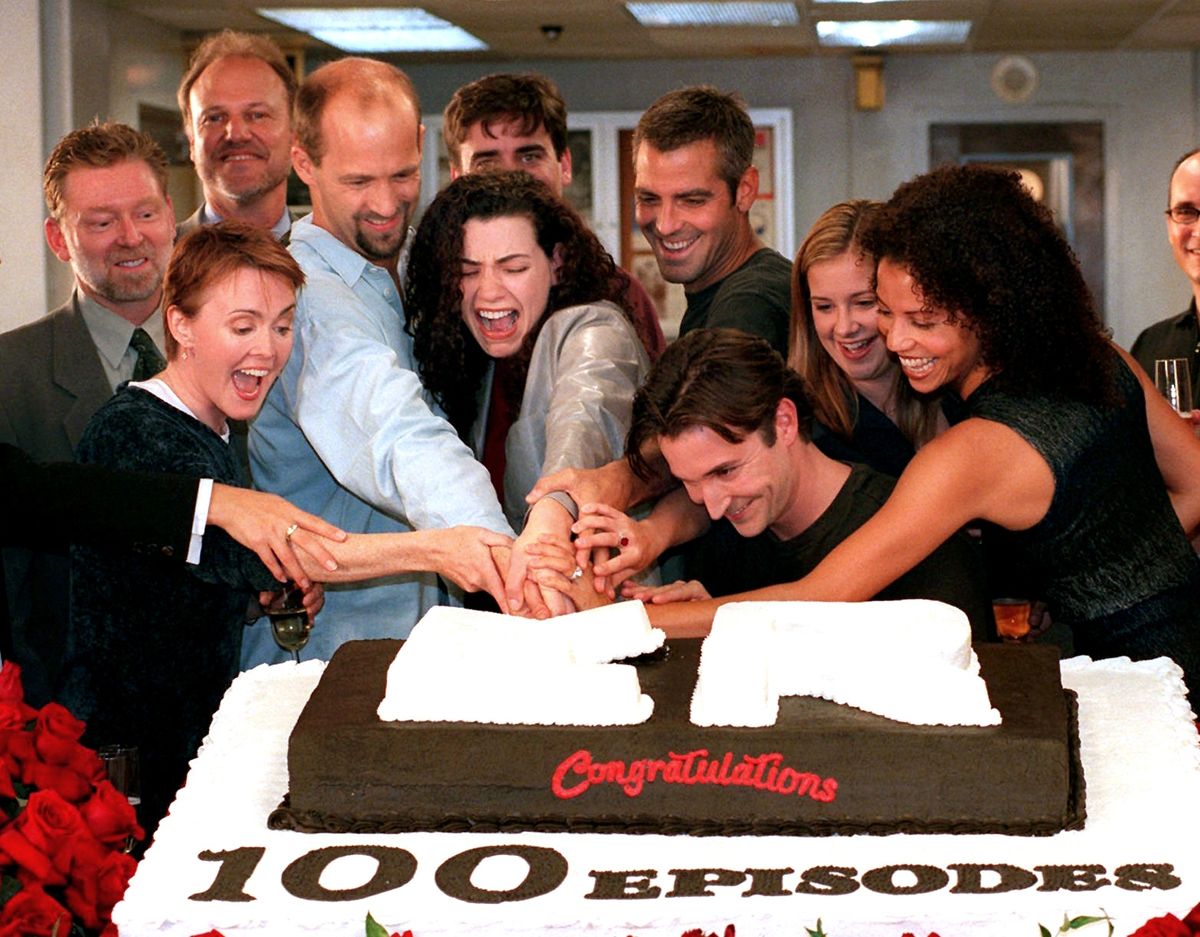‘ER’ closes its doors
NBC medical drama had many firsts

Some shows change TV, and some change lives. Then, there are a few – very few – that actually accomplish both.
As “ER” comes to an end tonight after 15 seasons, here are seven ways NBC’s extraordinary medical drama made a difference:
•“ER” is the last holdout of NBC’s “must-see TV” Thursday lineup.
By the mid-1980s, NBC’s Thursday had become national appointment TV, with roughly a third of viewers who were watching at 10 p.m. tuning in to “Hill Street Blues,” then “L.A. Law” and finally “ER” – which bowed in 1994, the same season as “Friends.”
There are still major hits on TV (“American Idol,” anyone?), though none of quite the magnitude of “ER,” which, during its sophomore season, came close to commanding nearly half the TV households a couple of times.
Moreover, no show now on TV – with the exception of “60 Minutes” – is so closely identified with a specific time period.
•“ER” was one of TV’s first major dramas to incorporate densely accurate medical jargon.
Noah Wyle was on “Ellen” the other day, and at the prompting of the host, he recited a long string of medical terms that would have fractured the jaw of the average mortal. Accurate? It always was.
“ER” had doctors on the writing staff – including co-executive producer Neal Baer, just finishing up at Harvard Medical School, and Lance Gentile, who also was an emergency-room doctor – to craft the medical stories.
And creator Michael Crichton was, of course, a doctor before he became a superstar movie scribe.
Lydia Woodward, one of “ER’s” original producers – who had written for network classics such as “China Beach” and “St. Elsewhere” – says it “was very novel to speak medical-ese on a TV show, and so much of it.”
Gentile recorded the actors’ dialogue on cassettes so they could listen on the way to work. As a result, Woodward says, they “got very, very good at it and I think we all began to understand something about medicine.
“That,” she says with a laugh, “was a huge mistake because half the time we didn’t know anything.”
•“ER” had a profound effect on the way people viewed their own health.
Medical dramas like “Dr. Kildare” were pillars of prime time for decades until “ER” arrived, but this show probably had a greater impact on the way viewers thought of their own health than any of its predecessors.
Baer, now an executive producer on “Law & Order: SVU,” says, “We found that one out of seven people who watched ‘ER’ actually went to their health care provider after they watched something on the show, which made us feel that we had a responsibility to represent material accurately and not make false promises.”
The show was later instrumental as a springboard for “Hollywood, Health & Society,” a program created by the USC Annenberg Norman Lear Center for show-biz scribes to get their medical facts right for story lines.
•“ER” changed the way the medical profession viewed itself.
“Not too long after the show started, applications to emergency residency programs just skyrocketed – it became one of the most coveted residency programs in the country,” says Dr. Mark Hoornstra, director of the department of emergency medicine, and president and chief executive of Nassau Emergency Medicine at St. Francis Hospital in Roslyn, N.Y.
He adds that the show was a “cathartic” outlet of sorts, as well.
“The emergency department is such an intense place that even physicians who pride themselves on being able to bond empathetically with their patients have to pull back a lot (emotionally),” Hoornstra says. “You can maybe indulge that when you see it on TV.”
With “ER,” he adds, he did.
•“ER” changed the whole structure of the medical drama.
Woodward says that when John Wells, the show’s longtime top producer, showed her the pilot script, “I didn’t get it. ‘ER’ was brand-new. We would bring the patient through the door and five minutes later, you’d never see that patient again.”
She adds: “It’s a little bit of what ‘Hill Street’ did to the cop genre.”
Multiple story threads – some tied up by hour’s end, some left untied – gave the show energy and a sense that real life isn’t always resolved by the last commercial break.
•“ER” embraced the steadicam, which changed the look of prime time.
Remember those whirling vertiginous opening scenes, as the camera slid effortlessly from one face to the next face to the next face? Or those stunning operating-room scenes that seemed to embrace every detail, emotion and crisis in one effortless sweep?
That was the “steadicam,” an “ER” fixture as much as George Clooney or Anthony Edwards. The steadicam – used widely on the big screen but not on the small – was to become a fixture of “The West Wing’s” walk-and-talk sequences.
“The big star was the steadicam,” Baer says. “It … allowed us to run with the doctors.”
•“ER” made George Clooney an A-list star but … no one else.
Not so surprising, really, when you consider TV history. Yes, Denzel Washington came out of “St. Elsewhere,” but there probably are only a dozen or so superstars (Bruce Willis, Clint Eastwood, Sally Field, Will Smith, Tom Hanks) who got their start on TV.
In fact, “ER’s” specialty was the ensemble – a tight band of brothers and sisters who worked splendidly together, yet proved less than the sum of their parts when they drifted to other shows.
Its ability to bring in so many other memorable characters in later years (played by Alex Kingston, Paul McCrane, Goran Visnjic, Linda Cardellini, Angela Bassett) contributed to its longevity.
Ensembles have always been part of television, though relatively few survived (or were designed to survive) the departure of the marquee name. “ER” outlasted Clooney – by nearly a decade.